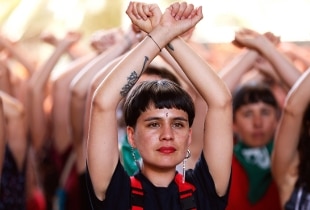Share
20 October 2020 The
average income of women
represents about 59.5% of that of men overall.
Income diversity is also reflected in tax revenue with a lower average rate for women, with the only exception of the lowest income tenth.
This is what emerges from the
report on the gender budget of the Mef
illustrated in a hearing to the Senate and Chamber Budget Committees by the undersecretary for the economy, Cecilia Guerra.
"This evidence on gender inequalities in income, when not deriving from real discrimination on the labor market to the detriment of women, is largely a reflection of the gender" specialization "between paid and unpaid work, by virtue of which women more frequently accept lower wages in the face of advantages in terms of flexibility and hours ", explained Guerra.
Italy is the country that has overall recorded the greatest progress in the period 2005-2017 to combat the gender gap but on the basis of the
EU Gender Equality
Index it is still the last country in the EU as regards the world of work.
According to the data collected in the report, which uses 128 different indicators of gender gaps in the economy and society, elaborated by Italian (Istat and Inps, first of all) and European institutions, the female employment rate in Italy in 2019 is still very low (50.1%) and records a distance of 17.9 percentage points from the male one, with very wide territorial gaps, with an employment rate of women equal to 60.4% in the north and 33.2% in the South.
Symmetrically, the rate of non-participation in work reaches higher levels (33%) for younger women and lower levels for the 45-54 age group (19.2%), with significant territorial and gender gaps: from 41.5% for women in the South (compared to 28.8% for men), to 17.6% for women in the center (compared to 12.3% for men) and to 12.7% for women in the north (compared to 7.9% for men).
Furthermore,
on the
quality of work front,
the percentage of women working part-time appears to be growing (32.9% in 2019), involuntary in 60.8% of cases.
At the same time, although women graduate significantly more than men (with a gap in their favor of 12.2 percentage points) more than one in four women (26.5%) are over-educated with respect to their jobs and, women, the incidence of low-wage dependent jobs is particularly high (11.5%, compared to 7.9% for men).
Analyzing specifically the participation in the labor market of women in the 25-49 age group, there is a strong employment gap (74.3%) between women with preschool children and women without children, one of the most evident difficulties in reconciling work and professional life for women.
"Very alarming, in this sense, are also the data of the national labor inspectorate on the resignations and consensual resolutions of working mothers and fathers who, in addition to a continuous increase since 2011, indicate a very strong gender gap: voluntary resignations involve mothers in 73% of cases - explained Guerra - these are mostly young women, with little seniority in work, mainly employed in the tertiary sector, with low qualifications. The most recurrent motivation (at least one third of cases) is the impossibility of reconciling employment with care work, especially in the absence of family support networks ".
"The situation that characterizes the socio-educational services for children in Italy - underlined the undersecretary - appears rather dramatic. The percentage of children under three years old taken care of by public nurseries reaches 12.5% in 2017 and even lower is that relating to supplementary services for early childhood (1%). On the front of parental leave, although the number of fathers who use them is increasing (63.3 thousand in 2019), it is still significantly lower than the number of mothers (233.6 thousand) ".

